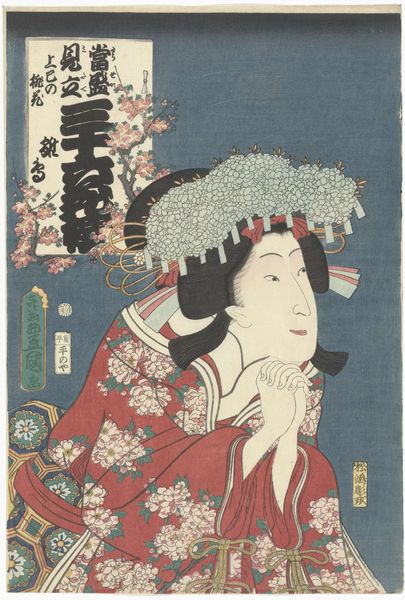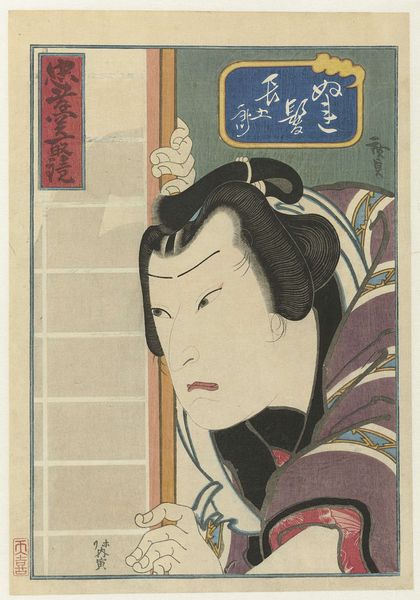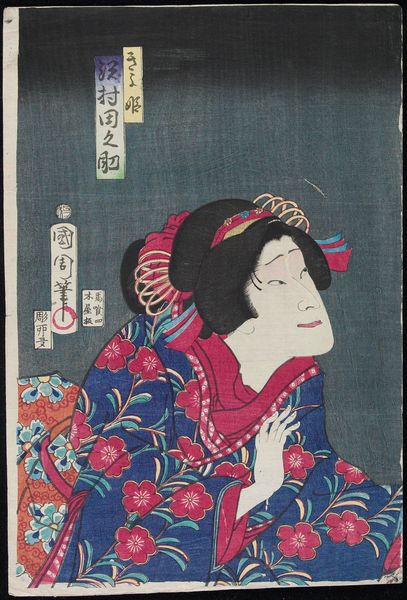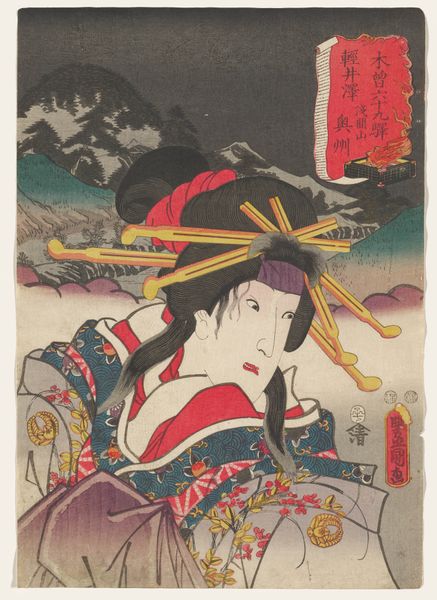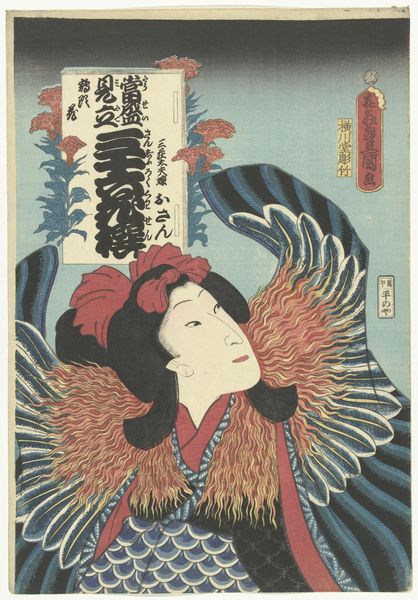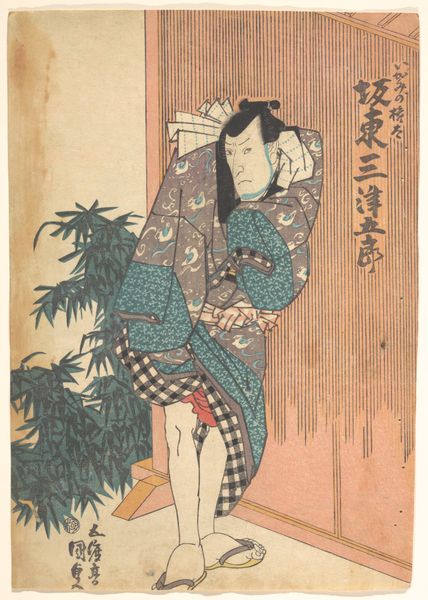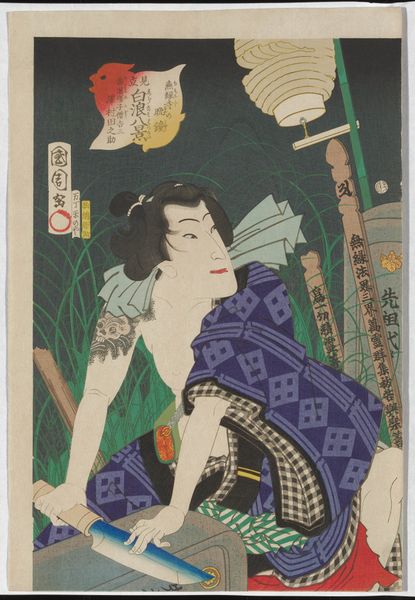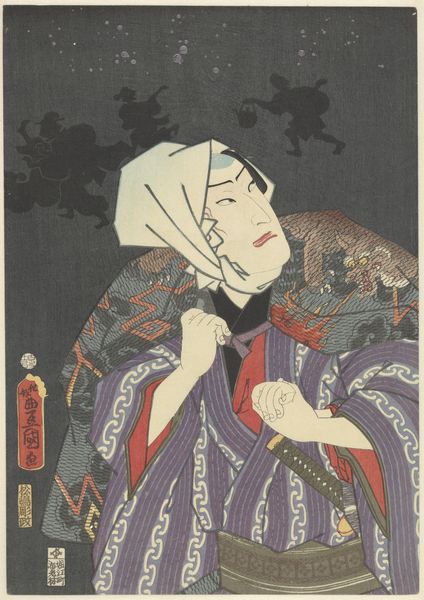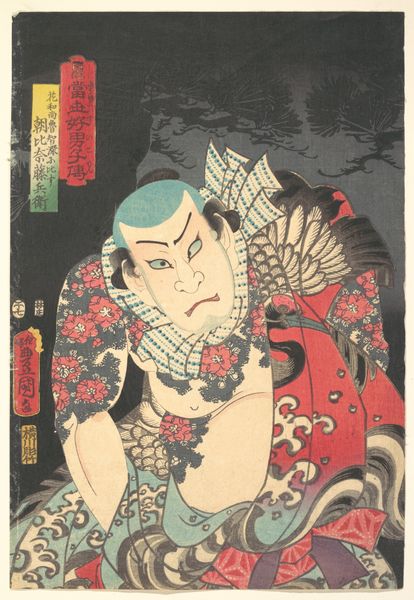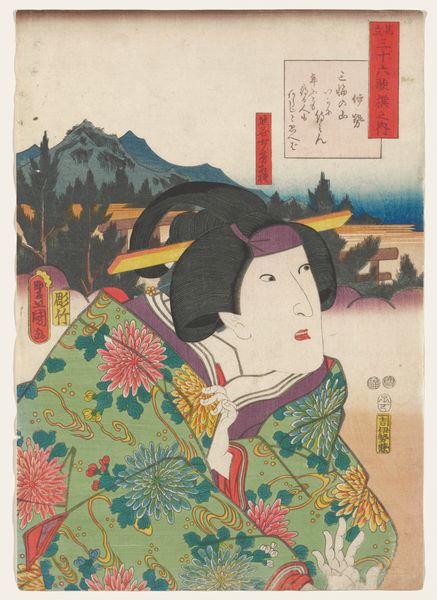
print, woodblock-print
# print
#
asian-art
#
landscape
#
caricature
#
ukiyo-e
#
figuration
#
woodblock-print
Dimensions: height 329 mm, width 243 mm
Copyright: Rijks Museum: Open Domain
Curator: Looking at this woodblock print by Utagawa Kunisada, titled "Hatsuhana in Hakone" from 1852, what immediately strikes you? Editor: The stylized water—almost fabric-like in its draping—is arresting. There's an immediate sense of constructed drama. Is this waterfall backdrop a theatrical curtain, or an attempt at realistic depiction? Curator: It's definitely playing with visual codes. Kunisada was a leading printmaker of ukiyo-e, “pictures of the floating world,” and often depicted actors and scenes from kabuki theater. Notice the subject’s clothing; her delicate hands; it’s clearly a theatrical pose. The waterfall, then, is both setting and a compositional element meant to highlight the human form. Editor: Speaking of material, look at the labor that goes into something like this! Multiple woodblocks, each meticulously carved to achieve these vibrant, flat colors, not to mention the precision required for the key block to define the outlines and details. Imagine the number of impressions produced! Was this readily available, affordable art for a broad segment of society? Curator: Precisely. Ukiyo-e prints became extremely popular amongst the merchant class of Edo period Japan, who were eager for affordable and stylish art. The production involved collaboration, with the artist, block carver, printer, and publisher all playing essential roles. In regards to form, notice the stark contrast between the flowing waterfall and her rigid expression and how the wave patterns visually frame her face? Editor: And there’s a distinct narrative being implied too, judging from that cartouche on the right side. I wonder what that writing signifies; perhaps more clues towards her status or role, her position in that society, the type of stories circulated... Curator: Undoubtedly, context would enrich our formal reading. We see a sophisticated interplay of representation and dramatic performance enhanced by the careful use of line and color to capture a moment suspended between the real and the imagined. Editor: The materiality, the multiple processes, are telling. It encourages a view that emphasizes craft, collaborative work and social reception of an artifact, beyond pure aesthetics or individual genius. Curator: Quite so; its allure transcends any single interpretation, and reveals the many stories that can be derived through form.
Comments
No comments
Be the first to comment and join the conversation on the ultimate creative platform.



